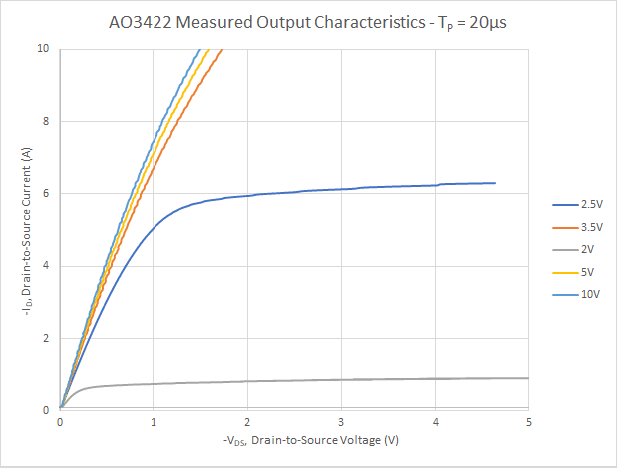I-V curve tracing for transistors can best be accomplished using Vektrex precision source measure units (SMUs). Vektrex SMUs provide the short (many datasheets specify 20 µs) pulses that are required to limit heating. The Vektrex SMU can also deliver the high output power needed to graph interesting parts of the I-V curve (such as when the transistor is just turning on).
Application Example: semiconductor device test, and the device is a transistor. Replace an existing system based upon a legacy curve tracer; max voltage is 200V and max current 5A.
The Vektrex current source that is most appropriate for curve tracing is the SpikeSafe SMU. This source includes four capabilities needed for curve tracing:
- Total output power; high current and/or high voltage
- Fast repeatable pulses to keep the device heating low (Vektrex min pulse width is 1us)
- Integrated low noise digitizer for crazy stable measurements
- Hardware integrated pulsed sweep for I-V curve generation
The Vektrex SMU easily generates I-V curves that perfectly duplicates and improves on manufacturer’s data sheet curves.

What about Vektrex’s DC Current Sources? No, these sources do not include pulse capability and the advanced modes (sweeps etc.) required for Curve Tracing. The DC sources are optimized for reliability/burn-in and other high-capacity applications.
Vektrex SpikeSafe precision SMU specifications include models with currents to 60A.
When using a current source for curve tracing, current is forced and voltage is measured. Forcing current produces the same graphs as forcing voltage. Forcing current also prevents device overstress since the current is always controlled. By using shorter pulse widths (20us pulse width used in this example), device heating can be avoided.
Curve tracer data is used for datasheets. Datasheets are used by designers who design end user products. Control of device heating is important. Device heating distorts the data making the data unusable. Actually, the data is usable – the end user/designer will suffer though. R&D will be extended requiring more thermal analysis and testing. Worse yet, a product might be released using bad data resulting in very high support and maintenance costs. Beware of bad curves on datasheets.
Contact us for more information.